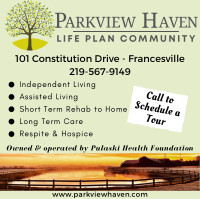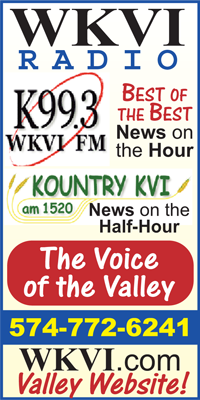Hundreds of thousands of Hoosiers stand to gain financial help buying 2017 health coverage
- Details
- Published: Monday, 05 December 2016 16:43
WASHINGTON, D.C. - Already, about 8.8 million Americans, and 139,437 Hoosiers, who buy health insurance through HealthCare.gov, receive tax credits that help make coverage more affordable.
But about 12 million more Americans, including 327,800 Hoosiers, may also be eligible for help during this Open Enrollment, but not know it, according to the U.S. Department of Health and Human Services.
This group includes:
- Current HealthCare.gov consumers: 4,800 Indiana consumers who didn’t get tax credits last year could be eligible for tax credits in 2017, even if their income remains the same, because financial assistance moves along with rates. That’s 14 percent of currently unsubsidized Indiana Marketplace consumers.
- Off-Marketplace individual consumers: About 45,000 Hoosiers who currently pay full price for individual coverage off-Marketplace could be eligible for tax credits if they purchase a 2017 plan through HealthCare.gov instead.
- The remaining uninsured: About 278,000 uninsured Hoosiers earn incomes indicating they, too, could be eligible for financial assistance. Nationwide, 84 percent of Marketplace-eligible uninsured Americans have incomes suggesting they are tax credit eligible.
In Indiana, 33,707 people have already signed up for coverage in the first month of Open Enrollment, more than last year at this time. But many more Hoosiers might benefit from visiting HealthCare.gov before the Dec. 15 deadline for Jan. 1 coverage and checking out their options for affordable, quality health insurance.
Affordable by design. The Marketplace’s tax credits are designed to keep pace with premium increases. This means that for many consumers already receiving tax credits, the value of that financial assistance will increase this year to keep pace with the cost of coverage in their area. It also means that more individuals may qualify for tax credits as premiums rise. For people eligible for financial assistance, the ACA specifies the share of income the consumer is expected to contribute toward health coverage. The tax credits make up the difference between that amount and the actual cost of a consumer’s benchmark (second-lowest-cost silver) plan.
For example, in 2017, a 27-year old in Indiana making $25,000 per year will pay $142 per month to purchase the benchmark plan, almost exactly the same as in 2016. That’s because the 27-year old will, on average, get an $87 tax credit.
Check out your options. The Marketplace is open for business, and HHS is encouraging anyone who might need coverage next year to visit HealthCare.gov and check out their options before the December 15 deadline for coverage that starts January 1. Millions of Americans could be surprised to find out they’re eligible for financial assistance this year, even if they weren’t last year, giving them affordable, quality options to choose from. Visit HealthCare.gov to browse and shop for quality, affordable health plans. More than 48 percent of current Indiana Marketplace consumers will find plans for less than $75 per month, and the vast majority can save by coming back to actively shop instead of waiting to be re-enrolled in their current plan.
The state-by-state tables below show the number of consumers nationally who could benefit in 2017 from the financial assistance Marketplace tax credits provide. If these consumers were to take advantage of the help offered on HealthCare.gov, they could find affordable, quality options.
|
Table 1. Availability of Financial Assistance among Current Health Insurance Marketplace Consumers |
|||||
|
Percent of Consumers Receiving Tax Credits in 2016* |
Percent of Consumers Potentially Eligible for Tax Credits in 2017 |
Number of Unsubsidized Consumers in 2016 |
Number of Consumers Potentially Newly Eligible for Tax Credits in 2017 |
Percent of Unsubsidized Consumers in 2016 Who Are Potentially Newly Eligible for Tax Credits in 2017 |
|
|
Total |
85% |
89% |
1,297,900 |
286,100 |
22% |
|
AK |
86% |
90% |
2,800 |
600 |
21% |
|
AL |
89% |
93% |
16,700 |
5,300 |
32% |
|
AR |
87% |
90% |
8,500 |
1,900 |
22% |
|
AZ |
74% |
83% |
45,700 |
13,200 |
29% |
|
DE |
82% |
86% |
4,700 |
1,200 |
25% |
|
FL |
91% |
94% |
138,700 |
34,800 |
25% |
|
GA |
86% |
92% |
59,700 |
14,300 |
24% |
|
HI |
81% |
86% |
2,600 |
600 |
24% |
|
IA |
85% |
89% |
7,300 |
2,000 |
27% |
|
IL |
75% |
81% |
89,300 |
22,000 |
25% |
|
IN |
81% |
84% |
33,800 |
4,800 |
14% |
|
KS |
82% |
86% |
16,800 |
4,200 |
25% |
|
LA |
89% |
93% |
19,300 |
4,400 |
23% |
|
ME |
87% |
90% |
9,700 |
2,400 |
24% |
|
MI |
83% |
87% |
50,800 |
10,000 |
20% |
|
MO |
87% |
90% |
31,100 |
7,100 |
23% |
|
MS |
90% |
94% |
8,500 |
3,000 |
35% |
|
MT |
83% |
87% |
8,900 |
2,300 |
25% |
|
NC |
89% |
93% |
52,700 |
13,100 |
25% |
|
ND |
85% |
91% |
2,400 |
600 |
26% |
|
NE |
88% |
92% |
8,500 |
2,200 |
26% |
|
NH |
66% |
70% |
17,000 |
1,600 |
10% |
|
NJ |
80% |
84% |
54,300 |
8,700 |
16% |
|
NM |
68% |
76% |
16,500 |
3,700 |
22% |
|
NV |
87% |
90% |
10,300 |
2,000 |
20% |
|
OH |
80% |
85% |
41,600 |
7,600 |
18% |
|
OK |
84% |
88% |
21,200 |
5,600 |
27% |
|
OR |
71% |
78% |
39,500 |
8,200 |
21% |
|
PA |
76% |
82% |
94,700 |
20,800 |
22% |
|
SC |
89% |
92% |
22,200 |
4,800 |
22% |
|
SD |
88% |
93% |
2,500 |
800 |
33% |
|
TN |
85% |
89% |
35,000 |
8,900 |
25% |
|
TX |
84% |
88% |
193,300 |
38,600 |
20% |
|
UT |
86% |
90% |
23,000 |
6,000 |
26% |
|
VA |
82% |
86% |
65,700 |
11,400 |
17% |
|
WI |
84% |
87% |
34,800 |
6,000 |
17% |
|
WV |
85% |
89% |
4,900 |
1,200 |
24% |
|
WY |
90% |
92% |
2,100 |
300 |
16% |
* U.S. Department of Health and Human Services, “Addendum to the Health Insurance Marketplaces 2016 Open Enrollment Period: Final Enrollment Report,” ASPE Issue Brief, ASPE, March 11, 2016, available at: https://aspe.hhs.gov/sites/
Note: Plan information is from the plan landscape files and active plan selections in the CMS Multidimensional Insurance Data Analytics System (MIDAS) for 38 states using the HealthCare.gov platform in 2016 and 2017. Kentucky is new to the HealthCare.gov platform in 2017 and is not included in this analysis. This analysis holds all enrollee characteristics unchanged and calculates 2017 premiums and tax credits based on the same age, family composition, and household income as in 2016. This analysis includes only enrollees who could be linked to complete plan and premium data for both 2016 and 2017, and excludes tobacco users. Consumers enrolled in catastrophic plans, which are not available to all consumers, were not considered in these calculations. For additional details, see “Health Plan Choice and Premiums in the 2017 Health Insurance Marketplace” (available at:https://aspe.hhs.gov/pdf-
|
Table 2. Consumers Without Health Insurance Marketplace Coverage Who May Be Eligible for Tax Credits |
||
|
Off-Marketplace Consumers Potentially Eligible for Tax Credits* |
Uninsured Consumers Potentially Eligible for Tax Credits |
|
|
Total |
2,488,000 |
8,988,000 |
|
AK |
5,000 |
27,000 |
|
AL |
33,000 |
136,000 |
|
AR |
29,000 |
100,000 |
|
AZ |
33,000 |
162,000 |
|
CA |
313,000 |
740,000 |
|
CO |
52,000 |
98,000 |
|
CT |
15,000 |
44,000 |
|
DC |
2,000 |
3,000 |
|
DE |
5,000 |
20,000 |
|
FL |
153,000 |
879,000 |
|
GA |
95,000 |
361,000 |
|
HI |
7,000 |
5,000 |
|
IA |
41,000 |
66,000 |
|
ID |
15,000 |
79,000 |
|
IL |
130,000 |
211,000 |
|
IN |
45,000 |
278,000 |
|
KS |
28,000 |
84,000 |
|
KY |
17,000 |
82,000 |
|
LA |
34,000 |
110,000 |
|
MA |
22,000 |
51,000 |
|
MD |
31,000 |
102,000 |
|
ME |
10,000 |
44,000 |
|
MI |
62,000 |
206,000 |
|
MN |
43,000 |
61,000 |
|
MO |
83,000 |
259,000 |
|
MS |
22,000 |
79,000 |
|
MT |
14,000 |
26,000 |
|
NC |
138,000 |
449,000 |
|
ND |
4,000 |
16,000 |
|
NE |
14,000 |
85,000 |
|
NH |
3,000 |
23,000 |
|
NJ |
44,000 |
171,000 |
|
NM |
8,000 |
34,000 |
|
NV |
27,000 |
63,000 |
|
NY |
68,000 |
142,000 |
|
OH |
64,000 |
272,000 |
|
OK |
33,000 |
188,000 |
|
OR |
26,000 |
81,000 |
|
PA |
111,000 |
304,000 |
|
RI |
4,000 |
14,000 |
|
SC |
21,000 |
232,000 |
|
SD |
17,000 |
28,000 |
|
TN |
79,000 |
235,000 |
|
TX |
252,000 |
1,629,000 |
|
UT |
56,000 |
102,000 |
|
VA |
56,000 |
264,000 |
|
VT |
1,000 |
4,000 |
|
WA |
53,000 |
185,000 |
|
WI |
51,000 |
87,000 |
|
WV |
15,000 |
36,000 |
|
WY |
5,000 |
34,000 |
* Office of the Assistant Secretary for Planning and Evaluation, “About 2.5 Million People Who Currently Buy Coverage Off-Marketplace May Be Eligible for ACA Subsidies,” ASPE Data Point, October 4, 2016, available at: https://aspe.hhs.gov/pdf-
Note: Estimates of the “Potentially Eligible for Tax Credit” exclude: adults with incomes at or below 200% FPL in Minnesota and New York, who are eligible for Basic Health Plan coverage; adults with incomes at or below 215% in the District of Columbia, who are potentially eligible for Medicaid; adults with incomes at or below 138% of the Federal Poverty Level (FPL) in all other Medicaid expansion states; adults with incomes below 100% FPL in states that have not expanded Medicaid (the “Medicaid gap”); children with incomes at or below 250% FPL in all states, who may be eligible for Medicaid or CHIP; individuals estimated to be immigrants not lawfully present; and individuals with incomes above 400% FPL. Numbers shown in table may not sum due to rounding.
Like HHS on Facebook, follow HHS on Twitter @HHSgov, and sign up for HHS Email Updates
Follow HHS Secretary Sylvia Burwell on Twitter @SecBurwell
- U.S. Department of Health & Human Services news release







